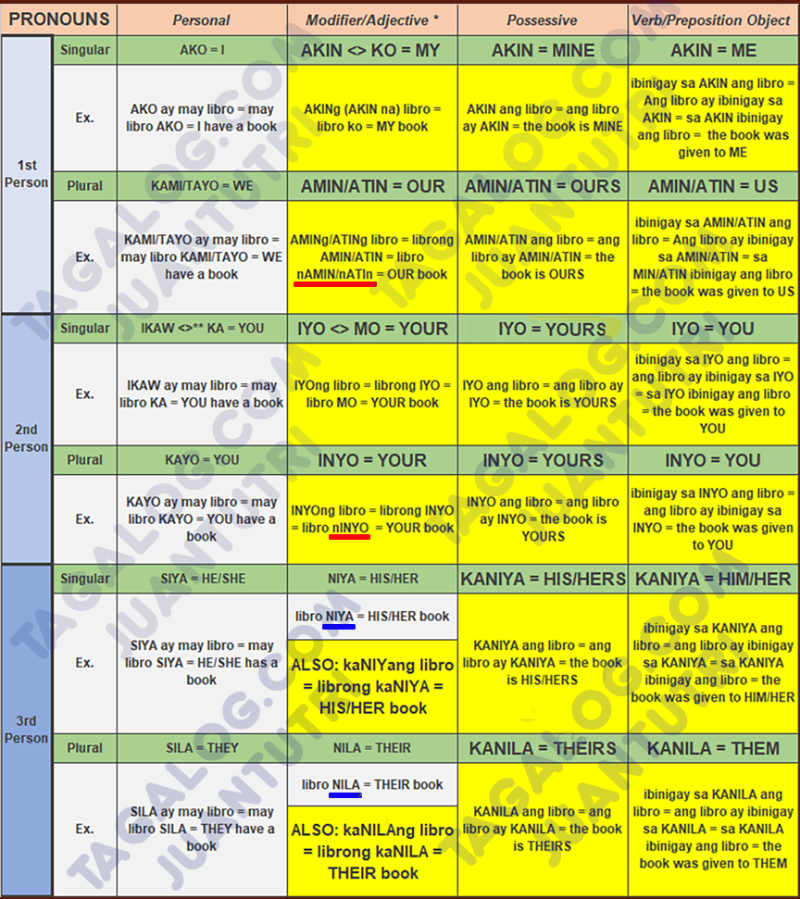@xpusostomos

As "jkos" mentioned, the "ang" and the "ng" before a noun will usually indicate the subject and object of a sentence.
However, when both the subject and object are represented by pronouns, knowing which is which can be confusing for learners of Tagalog. Your sentence, "Aasahan namin kayo" is an example of that.
To add to the confusion, it is also possible to use the same pronoun more than once in a sentence, with each one functioning differently from the other two.
For example:
AKINg libr
ó ang hinir
ám ni Maria, at kas
í AKIN "yun, dapat isa
ulì niya "yun sa AKIN.
translates to:
It is MY book that Maria borrowed, and because it is MINE, she should return it to ME.
Attached is a table of the Tagalog personal pronouns that you might find useful. The headings indicate the English classifications of the Tagalog personal pronouns based on their translations. In Tagalog, however, such classifications do not exist. We just refer to all of them as "panghal
íp (pronoun)". We savor complications.
Please note the asterisks in the table. Their meanings and the explanations about the table's other contents are:
1. * - as adjectives/modifiers, the linker "na" is needed between the pronoun and the noun it modifies. Hence, "akin NA libro", for example, becomes "akinG libro".
2. ** - the "<>" means that the form of the pronoun on the left is used when it is placed before the verb, and the form on the right is used when it follows the verb. Note that under the Subject pronouns, it is only the 2nd person "ikaw" that undergoes this change.
3. The possessive pronouns "namin", "natin", and "ninyo" are indicated (red lines) in the examples under "amin/atin" and "inyo". Normally, the linker "na" is attached, whenever possible, to the word before it. However, when the modifiers "amin/atin/inyo" follow the noun, the "na" may be attached to the beginning of the pronouns instead, i.e., they become "Namin/Natin/Ninyo".
4. The yellow cells indicate the use of the same pronoun under 3 different English pronoun categories. (I illustrated this in the example sentence above.)
5. The "niya" and "nila" pronouns under 3rd Person Modifier/Adjective (blue lines), though they function as modifiers, when linked to a single noun, do not use the "na" linker. They are also placed only AFTER the noun. However, occasionally, they might be placed between 2 nouns or be followed by another adjective. In those cases, the linker "na" is used and they become "niyang/nilang". For example, "an
ák niy
áng lalak
í (his/her male child)", "an
ák nil
áng matal
ino (their intelligent child)".
If you want to use them as modifiers BEFORE a noun, use "kaniyang/kanilang" instead, e.g., "kaniyang/kanilang anak".
=======
About "Aasahan namin kayo":
When you have a verb followed by 2 successive personal pronouns, 3 situations are possible:
1. If both pronouns are under the Subject pronouns in the table, expect an "at (and)" between them. The verb is Subject-Focus, for sure. This situation is quite rare though because we have single words for such pairings - ikaw/kayo at ako = tayo; ako at siya/sila = kami; ikaw/kayo at sila = kayo; etc..
Mag-
usap ak
ó at ik
áw. = Mag-
usap TAYO. = Let US talk.
2. If both pronouns are non-Subject pronouns, expect a "sa" between them. The verb is Object-Focus, with the first pronoun as the Actor and the second as the Indirect Object. The Direct Object may be before the verb, between the pronouns, after the pronouns, or understood based on context.
Ibig
áy mo SA AKIN. = (You) Give it TO ME.
Ang libro ay ibigay mo sa akin. = Give the book to me.
Ibigay mo ang libro sa akin. = Give the book to me.
Ibigay mo sa akin ang libro. = Give the book to me.
Nasaan ang libro? Ibigay mo sa akin. = Where is the book? (You) Give it to me.
3. If one is a Subject pronoun and the other is not, the Actor is the non-Subject pronoun and the Subject pronoun is the object.
Isipin MO sila. = (YOU) Think of them.
The type of sentence you gave, "Aasahan namin kayo", falls under situation 3.
Aasahan NAMIN KAYO. = WE shall be/are expecting YOU (to be there). - This sentence is what we would usually say as parting words after inviting someone (formally)/a group to an event.
Note: The pronoun "kit
á" is a special Filipino pronoun and is not included in the table because it is just the combined form of "ko ikaw".
Any verb followed by "kita" is an Object-Focus verb. For example, "mahal kita" is "mahal ko ikaw" where "ko" is the actor and "ikaw" is the object/subject. The subject-predicate form of "mahal kita" is "ikaw ay mahal ko". The infinitive verb of "mahal" is "mahalin". Its conjugation is "minah
ál - min
ámah
ál - m
ámahal
ín". "Mahal" is the shortened and much more often used form of the present "minamahal". So, "mahal kita" is the short way of saying "Ik
áw ay min
ámah
ál ko (lit. You are loved by me)".







